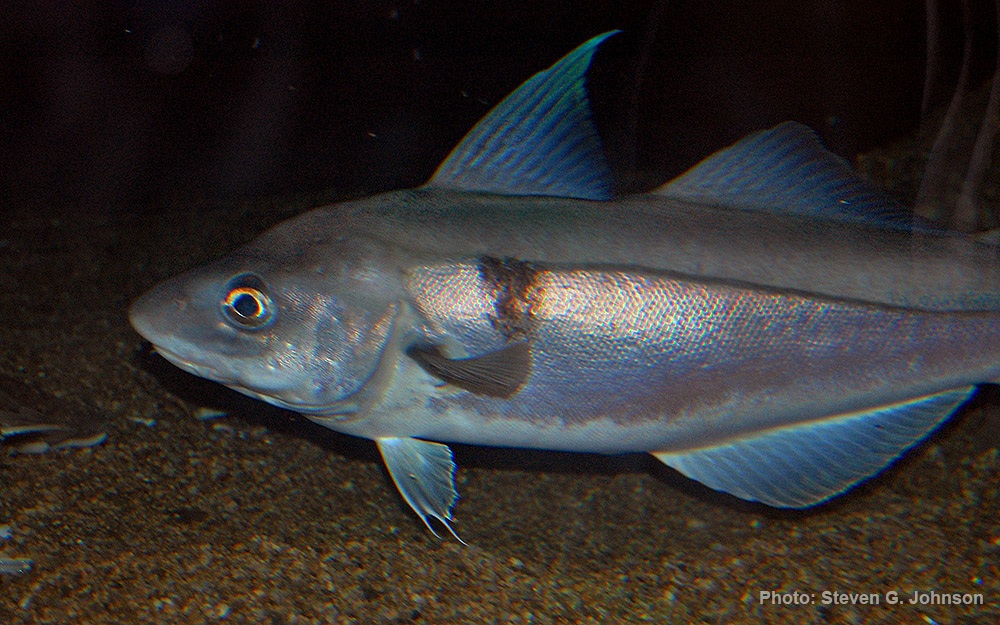Haddock
(Melanogrammus aeglefinus)

Classification
General data
The haddock (Melanogrammus aeglefinus) is a saltwater ray-finned fish from the family Gadidae, the true cods. It is the only species in the monotypic genus Melanogrammus. It is found in the North Atlantic Ocean and associated seas where it is an important species for fisheries, especially in northern Europe where it is marketed fresh, frozen and smoked; smoked varieties include the Finnan haddie and the Arbroath smokie.
Description
The haddock has the elongated, tapering body shape typical of members of the cod family. It has a relatively small mouth which does not extend to below the eye; with the lower profile of the face being straight and the upper profile slightly rounded, this gives its snout a characteristic wedge-shaped profile. The upper jaw projects beyond the lower more so than in the Atlantic cod. There is a rather small barbel on the chin. There are three dorsal fins, the first being triangular in shape and these dorsal fins have 14 to 17 fin rays in the first, 20 to 24 in the second, and 19 to 22 in the third. There are also two anal fins and in these there are 21 to 25 fin rays in the first and 20 to 24 fin rays in the second. The anal and dorsal fins are all separated from each other. The pelvic fins are small with an elongated first fin ray.
The upper side of the haddocks body varies in colour from dark grey brown to nearly black while the lower part of the body is dull silvery white. It has a distinctive black lateral line contrasting with the whitish background colour and which curves slightly over the pectoral fins. It also has a distinctive oval black blotch or thumbprint, sometimes called the Devils thumbprint, which sits between the lateral line and the pectoral fin, a feature which leads to the name of the genus Melanogrammus which derives from Greek melanos meaning black and gramma meaning letter or signal. The dorsal, pectoral, and caudal fins are dark grey in color while the anal fins are pale matching the colour of the silvery sides, with black speckles at their bases. The pelvic fins are white with a variable amount of black spots. Occasionally there are differently coloured variants recorded which may be barred, golden on the back or lack the dark shoulder blotch.
The longest haddock recorded was 94 centimetres (37 inches) in length and weighed 11 kilograms (24 pounds). However, haddock are rarely over 80 cm (31+1⁄2 in) in length and the vast majority of haddocks caught in the United Kingdom measure between 30 and 70 cm (12 and 27+1⁄2 in). In eastern Canadian waters haddock range in size from 38 to 69 cm (15 to 27 in) in length and 0.9 to 1.8 kg (2 lb 0 oz to 3 lb 15 oz) in weight.
Distribution
The haddock has populations on either side of the north Atlantic but it is more abundant in the eastern Atlantic than it is on the North American side. In the north-east Atlantic it occurs from the Bay of Biscay north to Spitzbergen; however, it is most abundant north of the English Channel. It also occurs around Novaya Zemlya and the Barents Sea in the Arctic. The largest stocks are in the North Sea, off the Faroe Islands, off Iceland and the coast of Norway but these are discrete populations with little interchange between them. Off North America, the haddock is found from western Greenland south to Cape Hatteras, but the main commercially fished stock occurs from Cape Cod and the Grand Banks.
















